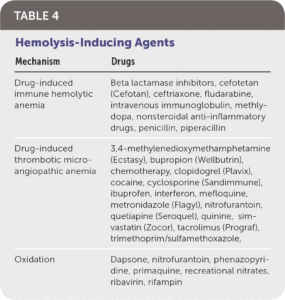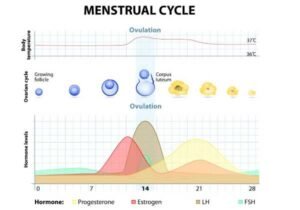Pictures of Melanoma and Other Skin Cancers
Understanding Melanoma and Skin Cancers Through Visual Identification
Examining images of melanoma and other skin cancers can significantly enhance your ability to detect potential issues during a home skin self-examination. Melanoma, known as the most lethal form of skin cancer, demands vigilant monitoring. However, recognizing the characteristics of more prevalent skin cancers, such as basal cell and squamous cell carcinomas, is equally critical. As a general guideline, any new or unusual skin growth warrants a professional evaluation by a dermatologist, especially if it evolves in size, shape, or color.
When to Consult a Dermatologist
Immediate consultation with a dermatologist is advised if you notice a lesion that is growing or changing. Regular self-examinations enable you to identify deviations from your skin’s normal appearance. This guide provides detailed visuals of melanoma and other common skin cancers, alongside symptoms and practical tips for conducting effective skin cancer self-checks.
Characteristics of Melanoma
Melanoma originates in the pigment-producing cells that determine skin color, making it the most severe type of skin cancer. It may manifest as:
-
Moles
-
Nodules
-
Rashes
-
Scaly patches
-
Persistent sores
Look for skin abnormalities that differ from surrounding areas and change over time. Early-stage melanoma might resemble a new mole or show alterations in an existing mole’s shape, size, or color. Itching or bleeding in a mole can also signal melanoma. Additionally, melanoma may appear as a large, irregularly bordered patch with varied colors, including brown, blue, red, purple, or white. Most melanomas are flat or slightly raised and typically asymptomatic beyond their visual traits.
Risk Factors for Melanoma
Key risk factors for developing melanoma include:
-
Excessive sun exposure
-
Fair skin
-
Family history of melanoma
Research suggests genetics contribute to 72% of melanoma cases. To reduce your risk, limit sun exposure, avoid tanning beds, wear sunscreen, and cover exposed skin outdoors. Regular dermatologist visits are recommended for any new or suspicious growths, even if they appear benign.
The ABCDE Method for Melanoma Detection
The ABCDE method is a reliable tool for identifying potential melanomas:
-
Asymmetry: Symmetrical moles are generally benign, while asymmetrical ones may indicate melanoma.
-
Border: Benign moles have smooth, even edges, whereas melanoma borders are often irregular.
-
Color: Melanomas may display multiple colors, such as red, black, brown, or flesh-toned, unlike uniform benign moles.
-
Diameter: Moles larger than a pencil eraser (about 6mm) should be examined.
-
Evolving: Any mole that changes in size, shape, color, or elevation over time requires professional evaluation.
This method helps track mole changes that may necessitate a dermatologist visit.
Identifying Benign Moles and the Ugly Duckling Sign
The “ugly duckling sign” is a useful strategy for spotting potentially cancerous moles. It involves identifying moles that stand out distinctly from others in size, shape, or color. Any mole that appears unusual compared to your typical moles should be evaluated by a dermatologist.
Nodular Melanoma: Key Features
Nodular melanoma, a fast-growing subtype, commonly appears on the legs, torso, arms, or head. It may resemble a mole, bug bite, pimple, or blood blister but does not heal like these benign conditions. Typically solid in color—often black but possibly pink, tan, blue, gray, or white—nodular melanomas are more prevalent in men and adults over 50. The EFG method aids in its identification:
-
Elevation: Raised or uneven moles may be concerning.
-
Firmness: Nodular melanomas feel firm to the touch.
-
Growth: Rapid or continuous growth beyond a few weeks signals a need for inspection.
Dysplastic Nevi: Atypical Moles
Approximately 10% of the U.S. population has dysplastic nevi, or atypical moles, which carry a higher risk of developing into melanoma. These moles are typically larger than 5mm, with irregular borders and a scaly texture. Colors range from pink to dark brown or a combination. Individuals with more than five dysplastic nevi face a tenfold increased risk of melanoma.
Amelanotic Melanoma: A Subtle Threat
Amelanotic melanoma is challenging to detect due to its lack of pigmentation, often appearing pinkish or whitish. It accounts for many melanoma cases in children and may not align with the ABCDE criteria, making visual identification trickier.
Acral Lentiginous Melanoma: Unique Locations
This melanoma type appears on the palms, soles, or under nails, often starting as a discolored, flat patch that thickens over time. Its colors vary from brown and blue to black and red. It is the most common melanoma in individuals with darker skin, comprising up to 75% of cases in this group, and typically affects adults over 40.
Subungual Melanoma: Under the Nail
Subungual melanoma, a rare form also known as nail apparatus cancer, is more frequent in individuals with darker skin. It appears under the nails and requires prompt attention due to its uncommon presentation.
💡 Frequently Asked Questions
What’s the Variance In between Basal Cellular Carcinoma and Squamous Cellular Carcinoma?
Answer coming soon. We are working on detailed responses to this common question.
Such include things like:
* Lymphoma of the pores and skin, a rather exceptional pores and skin most cancers that starts off within just lymphocytes, white blood cells that assist towards safeguard from bacterial infections
* Kaposi’s sarcoma, a fairly scarce pores and skin most cancers involved with human herpesvirus-8 and further more probably in direction of come about inside of americans with damaged immune systemsSkin Most cancers Designs: Optimum Well-liked and Deadly Layouts with Illustrations or photos Why Is Early Detection Substantial?
Answer coming soon. We are working on detailed responses to this common question.
Any time Is a Mole a Trouble?
Answer coming soon. We are working on detailed responses to this common question.
⭐ Expert Tips
- Include seasonal or trendy variations to keep your meals exciting.
- Highlight prep shortcuts or time-saving techniques for busy cooks.
- Consider dietary restrictions and include substitution suggestions.
✅ Key Takeaways
- These dinner ideas are perfect for impressing guests or enjoying special occasions.
- Choose recipes that match your skill level and available kitchen tools.
- Presentation and taste both contribute to a memorable dining experience.
📣 Join Our Community
Want more inspiration like this? Subscribe to our newsletter for weekly dinner ideas and cooking tips!






